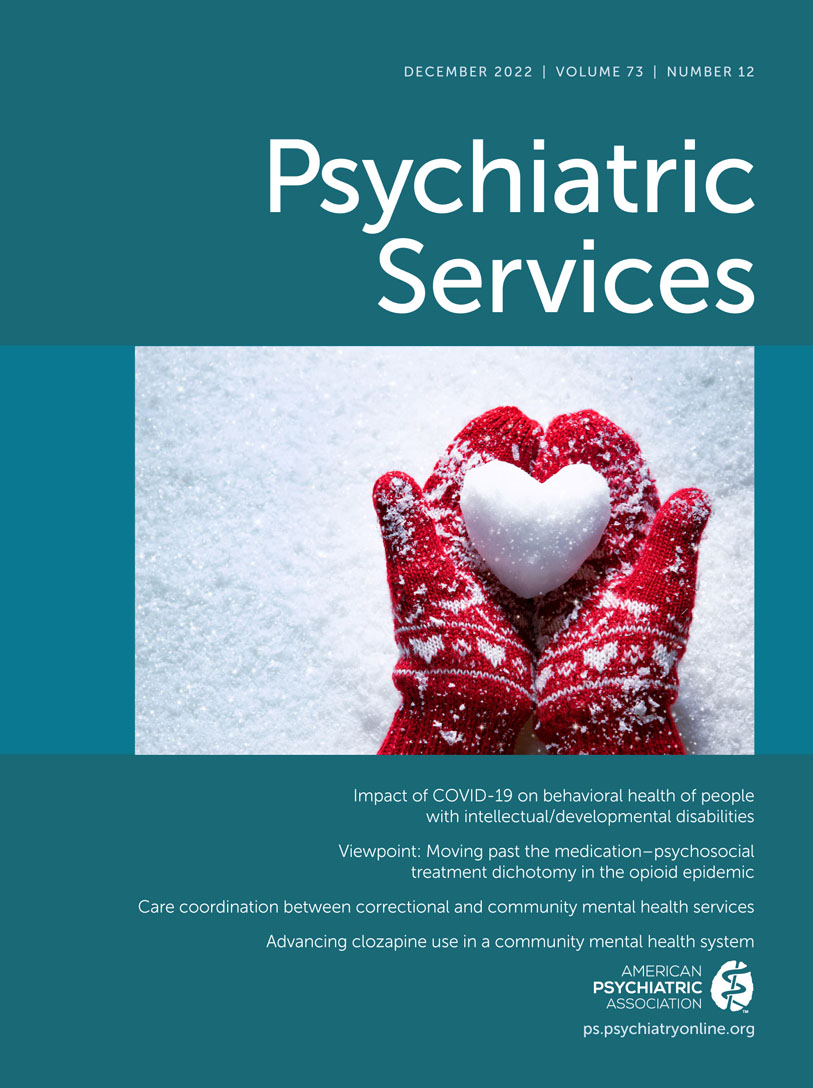Mental Health Conditions Among Children and Adolescents With a COVID-19 Diagnosis
The COVID-19 pandemic has prompted a surge in mental health needs among children (1, 2). However, few analyses of these needs have included children and youths of all ages, and although studies have found a heightened risk for new onset of mental health conditions after a COVID-19 diagnosis among adults (3), none has investigated the potential risk among youths. Utilizing a large nationwide claims database, we estimated the rate of new onset of mental health conditions among children and adolescents who had received a COVID-19 diagnosis but had no recent history of mental health problems.
We extracted December 2018–April 2021 data from IQVIA’s U.S. Open Source Claims, a multipayer, preadjudicated health insurance claims database covering all 50 U.S. states and Washington, D.C. The sample included 2,036,333 children diagnosed as having COVID-19 and 1,329,662 children who had tested negative for COVID-19; all children had no mental health conditions or mental health–related service utilization in the 12 months before the COVID-19 diagnosis or test. Children were organized into three age cohorts: 0–5, 6–11, and 12–17 years.
A higher proportion of children with a COVID-19 diagnosis (N=145,159, 7.1%) experienced new onset of a mental health condition compared with children with a negative COVID-19 test (N=45,627, 3.4%). The median length of time to a psychiatric diagnosis was 33 days after a COVID-19 diagnosis and 160 days after a negative COVID-19 test (Table 1). The most common mental health conditions after a COVID-19 diagnosis were anxiety (43%), attention-deficit hyperactivity disorder (36%), and trauma or stressor disorders (22%). The adjusted risk ratio (ARR) for new onset of any mental health condition was almost three times higher among those with a COVID-19 diagnosis than among those with a negative COVID-19 test (ARR=2.84).
| COVID-19 diagnosis (N=2,036,333)a | Negative COVID-19 test (N=1,329,662)b | |||||
|---|---|---|---|---|---|---|
| Condition | N | % | N | % | ARRc | 95% CI |
| Any mental health condition* | 145,159 | 7.1 | 45,627 | 3.4 | 2.84 | 2.81–2.87 |
| Diagnosis | ||||||
| ADHD* | 52,257 | 36.0 | 14,920 | 32.7 | 1.04 | 1.02–1.06 |
| Anxiety* | 62,564 | 43.1 | 18,023 | 39.5 | 1.08 | 1.06–1.10 |
| Depression* | 30,483 | 21.0 | 10,585 | 23.2 | 1.93 | 1.92–1.96 |
| Mood disorder | 7,984 | 5.5 | 2,418 | 5.3 | 1.89 | 1.85–1.93 |
| Trauma- or stressor-related disorder | 32,516 | 22.4 | 10,038 | 22.0 | 1.96 | 1.94–1.98 |
| Behavior or conduct disorder* | 17,274 | 11.9 | 3,513 | 7.7 | 1.88 | 1.85–1.91 |
| Tourette’s syndrome or tic disorder | 1,887 | 1.3 | 365 | .8 | 1.03 | .95–1.13 |
| Psychotic disorder | 871 | .6 | 274 | .6 | 1.04 | .96–1.15 |
| Other mental disorder | 1,597 | 1.1 | 639 | 1.4 | 1.15 | 1.06–1.26 |
| Median length to psychiatric diagnosis, in days* | 33 | 160 | ||||
TABLE 1. New onset of a mental health condition among children and adolescents, by COVID-19 diagnosis
These findings underscore the importance of providing sufficient mental health services as part of the pandemic response (4, 5). The high rate of new onset of mental health conditions among youths with no recent mental health history suggests the need for emotional and behavioral health supports, such as screening, assessment, and treatment. The prevalence of a diagnosis of new-onset mental health condition varied by age (see an online supplement to this column). Providers should identify specific mental health conditions at various ages and offer referrals to appropriate services.
1. Protecting Youth Mental Health: The US Surgeon General’s Advisory. Washington, DC, US Department of Health and Human Services, Office of the Surgeon General, 2021. https://www.hhs.gov/sites/default/files/surgeon-general-youth-mental-health-advisory.pdf Google Scholar
2. : Mental health–related emergency department visits among children aged <18 years during the COVID-19 pandemic—United States, January 1–October 17, 2020. MMWR Morb Mortal Wkly Rep 2020; 69:1675–1680Crossref, Medline, Google Scholar
3. : Bidirectional associations between COVID-19 and psychiatric disorder: retrospective cohort studies of 62 354 COVID-19 cases in the USA. Lancet Psychiatry 2021; 8:130–140Crossref, Medline, Google Scholar
4. : Mental Health Consequences of COVID-19: The Role of Social Determinants of Health. Washington, DC, US Department of Health and Human Services, Office of the Assistant Secretary for Planning and Evaluation, 2021. https://aspe.hhs.gov/sites/default/files/private/aspe-files/265356/mhconseqcovid.pdf. Google Scholar
5. Interim Guidance on Supporting the Emotional and Behavioral Health Needs of Children, Adolescents, and Families During the COVID-19 Pandemic. Itasca, IL, American Academy of Pediatrics, 2021. https://services.aap.org/en/pages/2019-novel-coronavirus-covid-19-infections/clinical-guidance/interim-guidance-on-supporting-the-emotional-and-behavioral-health-needs-of-children-adolescents-and-families-during-the-covid-19-pandemic. Accessed July 15, 2021 Google Scholar



